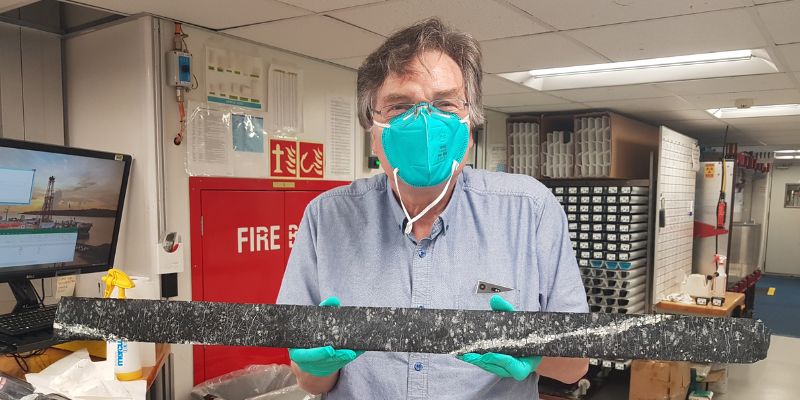Unraveling Earth's Secrets: Recovering 1,268 Meters of Mantle Rocks from the Mid-Atlantic Ridge
Key Ideas
- Scientists from the University of Leeds played a crucial role in recovering a groundbreaking 1,268-meter-long section of mantle rocks from the Mid-Atlantic Ridge.
- The mantle rocks offer insights into the origins of life on Earth, volcanic activity, global element cycles like carbon and hydrogen, and melting processes in the mantle.
- The findings, published in Science, reveal unexpected mineralogy and chemistry in the rocks, suggesting higher levels of melting than previously thought. This could revolutionize our understanding of magma formation and volcanism.
- Initial results indicate that interactions between olivine in mantle rocks and seawater could produce hydrogen and other molecules crucial for sustaining life, potentially shedding light on the origins of life on Earth.
Scientists from the University of Leeds, led by Dr. Andrew McCaig, were part of the team that successfully recovered 1,268 meters of mantle rocks from the Mid-Atlantic Ridge during Expedition 399. The rocks are expected to provide valuable insights into various aspects of Earth's processes, including the origins of life, volcanic activity, and global element cycles. The expedition, a collaboration involving seven countries, marks a significant milestone in Earth sciences.
The recovered rocks, analyzed by researchers like lead author Professor Johan Lissenberg from Cardiff University, revealed surprising mineralogical and chemical compositions. These findings suggest higher levels of melting in the mantle than previously anticipated, potentially reshaping our understanding of magma formation and volcanism.
Moreover, initial results indicate that olivine in the mantle rocks could react with seawater to produce hydrogen and other molecules essential for supporting life. This discovery has implications for understanding the origins of life on Earth and the role of mantle processes in sustaining it. The study, published in Science, showcases the importance of international scientific collaboration and sets a new standard for sharing research data.
